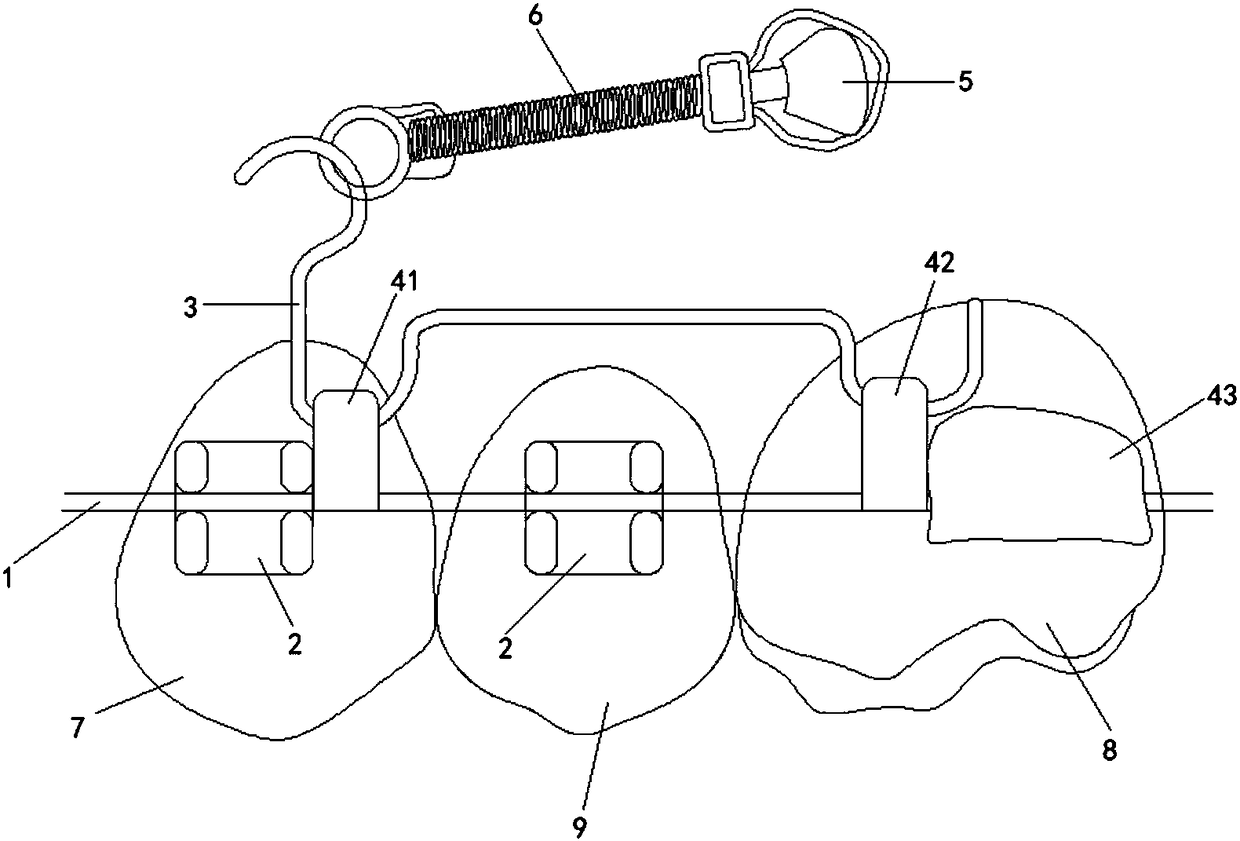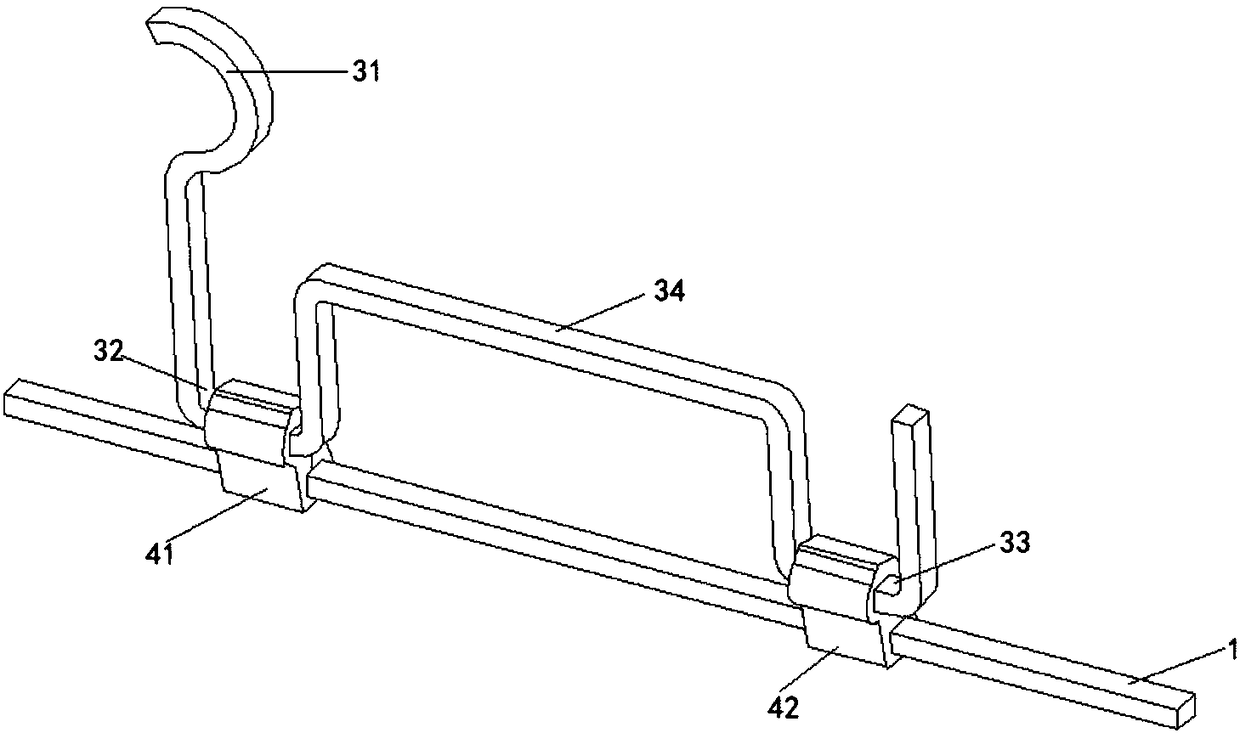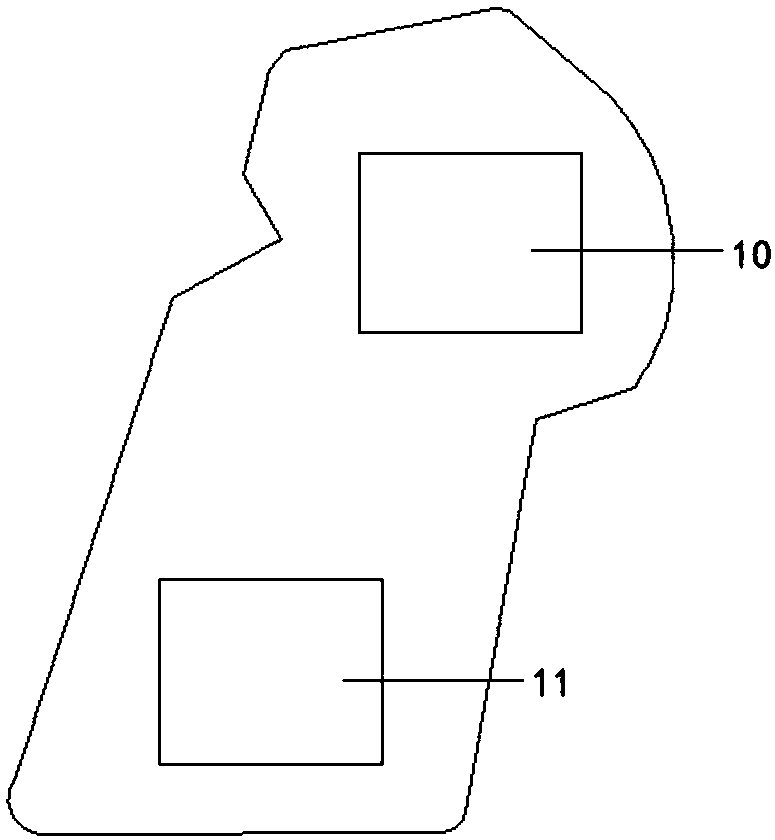Device for moving molar to far-middle based on micro-implant anchorage
A technology for micro-implantation and teeth grinding, which is applied in the field of orthodontic treatment and achieves the effects of simple structure, easy manufacture, time saving and economical cost.
- Summary
- Abstract
- Description
- Claims
- Application Information
AI Technical Summary
Problems solved by technology
Method used
Image
Examples
Embodiment Construction
[0022] In order to make the object, technical solution and advantages of the present invention clearer, the present invention will be further described in detail below in conjunction with the accompanying drawings.
[0023] figure 1 It is a diagram of the use state of the embodiment of the present invention, including: a main arch wire 1, a metal wire used to guide the movement of teeth; a bracket 2, attached to an orthodontic object; the main arch wire 1 passes through the bracket 2 in turn and fixed in the groove of the bracket 2; it also includes: auxiliary arch wire 3, buccal tube, anchorage element 5, and force applying element 6.
[0024] There are three buccal tubes, the first buccal tube 41 is attached to the first premolar 7, the second buccal tube 42 is attached to the first molar 8; the auxiliary arch wire 3 is used to connect the first buccal tube 41 and the second buccal tube 42, and the auxiliary arch wire 3 is located above the bracket of the second premolar 9;...
PUM
| Property | Measurement | Unit |
|---|---|---|
| The inside diameter of | aaaaa | aaaaa |
| Radian | aaaaa | aaaaa |
Abstract
Description
Claims
Application Information
 Login to View More
Login to View More - R&D
- Intellectual Property
- Life Sciences
- Materials
- Tech Scout
- Unparalleled Data Quality
- Higher Quality Content
- 60% Fewer Hallucinations
Browse by: Latest US Patents, China's latest patents, Technical Efficacy Thesaurus, Application Domain, Technology Topic, Popular Technical Reports.
© 2025 PatSnap. All rights reserved.Legal|Privacy policy|Modern Slavery Act Transparency Statement|Sitemap|About US| Contact US: help@patsnap.com



